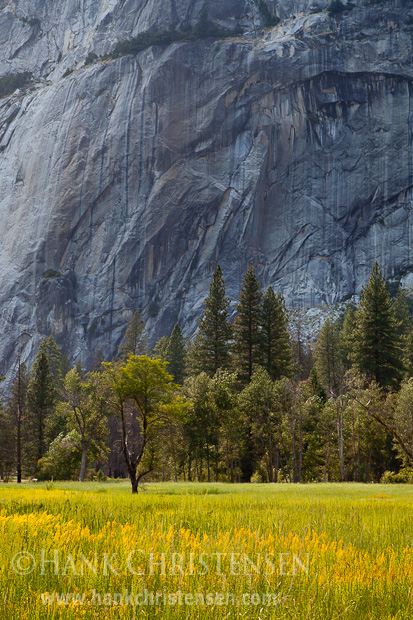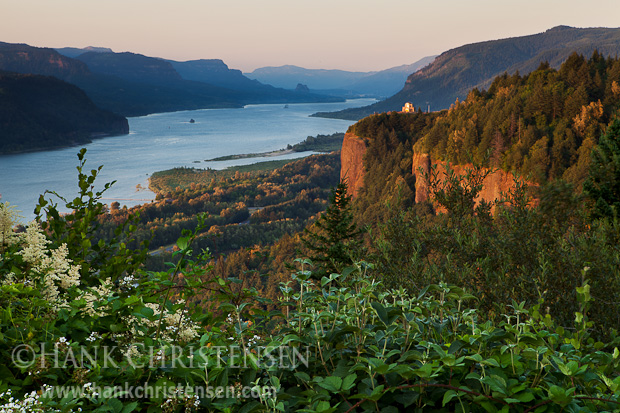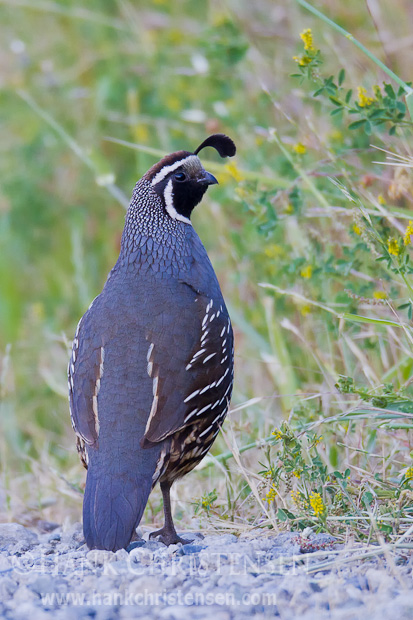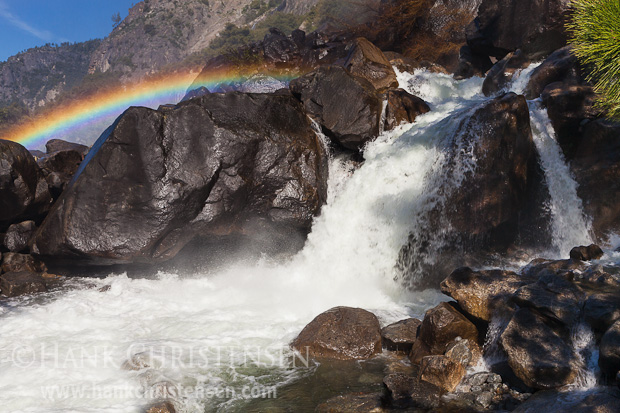
Recently a friend and I headed up to Yosemite for an early season 4-day backpacking trip. It was a good excuse to loosen up the joints for the summer and get out in the Sierra backcountry. We chose the area around Lake Vernon as sort of a staging point from which to launch an off-trail loop into some of the less explored drainages. Supposedly, this area was relatively snow-free compared to other areas at similar elevation (7,000 – 9,000 ft).
We decided to hike up out of Hetch Hetchy due to the easy access. Because permits are issued at the entrance gate, you can get a wilderness permit the night before as late as 9pm. That is a huge help for those driving up after work from the Bay Area. We got there Friday night, got our permit, and settled in at the backpacker’s campground overlooking O’Shaughnessy Dam. We were up at 5:30 the next morning, and hit the trail by 7am. We had a very long day of hiking and lots of climbing, so we needed the early start.
The uneventful hike along the edge of Hetch Hetchy reservoir was punctuated only by the raging waters of Wapama Falls (see photo above). A couple of weeks earlier, the flow from the fast snow melt was so great that park rangers closed the bridges across the falls and shuttled people by boat around the dangerous spots. I was happy that we timed it such that it was a easy walk through the water spray.
We reached Rancheria Falls by 9:30 and began our long climb up out of the lower elevations of Hetch Hetchy. After a long day of absolutely nowhere to camp (not that we were ready to stop anyway), we reached our destination of Lake Vernon. It ended up being a 16 mile day with 4800 ft of elevation gain. Not surprisingly, we were pretty worn out for a first day of the season! With little time to scout before it was fully dark, I set my alarm to wake up before sunrise and do some quick scouting for shots along the shoreline.
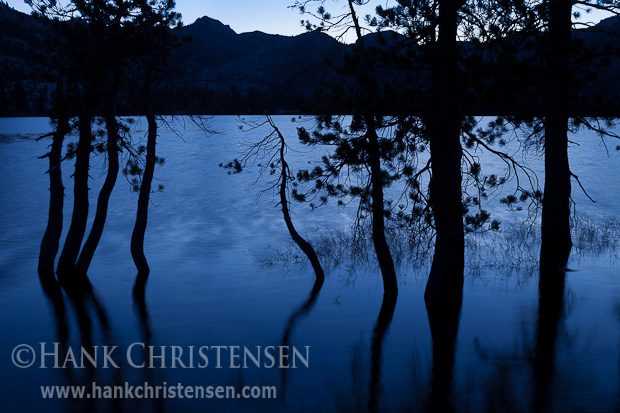
One of the features of the lake that struck me was that all along the shoreline, trees were growing directly out of the water. I’m guessing that the Lake was at peak capacity and was flooding the base of the trees, but it definitely made for an interesting silhouette abstract. The sun soon rose into a cloudless sky, and we were quickly packed up and ready to hit the trail once again.
Above Lake Vernon, we hit quite a few places where the trail was under one to two feet of water. Large patches of snow began appearing amongst the trees. As we climbed higher, we began to worry about our original plan of climbing off trail to 9,000 feet and from there, exploring some of the ridge lines. As we got closer to our destination, we could see the ridges were still full of snow. With no choice but to change our plans, we camped up above Lake Wilma on some flat granite slabs next to a quiet cascade.
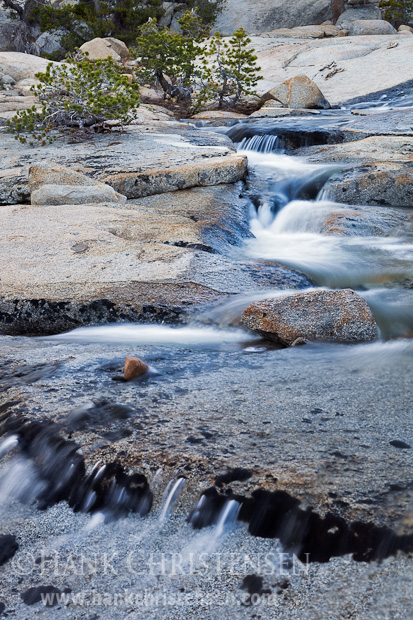
The next morning we decided that the best course of action was to more or less retrace our steps back to Lake Vernon, as we were pretty worn out from trudging through flooded meadows and snow drifts. At least this day would be mostly downhill (only 1500 ft of elevation gain), as the previous two days combined were close to 8,000 ft of gain. Walking downhill most of the day allowed us to enjoy the beauty of Falls Creek, which the trail followed most of the day.
We set up camp in the same spot along Lake Vernon that we had used two nights earlier. A bonus was getting to use the rest of the firewood we had already gathered! The next morning was quiet and beautiful. The surface of the lake had settled into a mirror, reflecting everything along the shore with perfection.
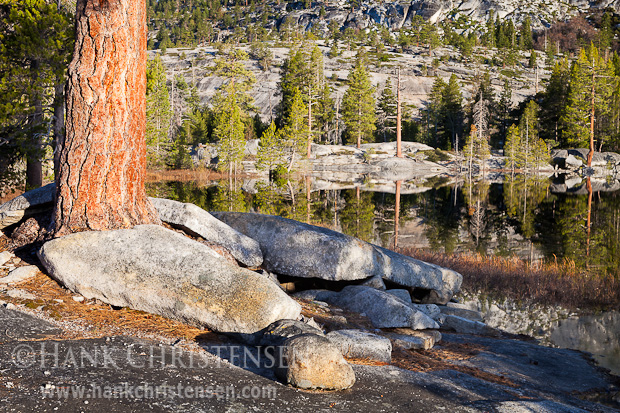
After enjoying a leisurely morning at the lake, we didn’t hit the trail until 9:30, our latest start yet. That was okay, because we had only an 11 mile hike out to the car, downhill almost the entire way. We left the lake opposite our entry point, creating a loop from Hetch Hetchy to Lake Vernon. We made quick time, blasting out of there in 4 1/2 hours. The most scenic part of the last day was descending the old construction road from Beehive Meadows. This was a road built to service the building of the dam, which has been converted into a hiking trail. A few chunks of asphalt were still seen here and there, but for the most part, mother nature had wiped out this road long ago with severe freeze/thaw cycles and many rock slides. Although the exposed decent was hot and hard on the joints, it did offer some stunning views of the reservoir.
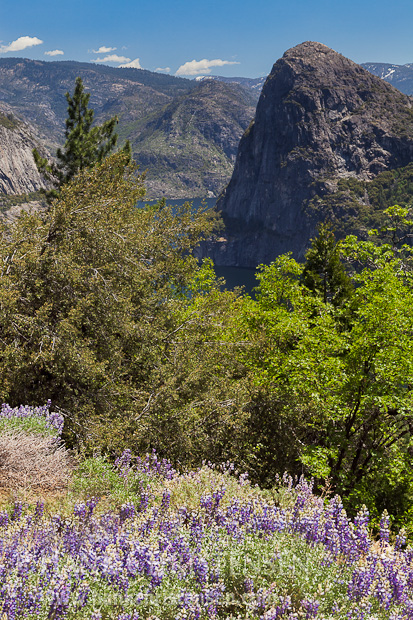
As I was reaching the waterline, I couldn’t help but try to visualize what this valley would look like in its original condition, before the dam was built. I couldn’t help but feel a touch of remorse as I imagined John Muir shaking his head in disgust.
We reached the car by 2pm and began the drive home. It was a great first trip of the season, clocking in at 3 1/2 days of hiking, just over 50 miles covered, and over 10,000 ft of elevation gained. If this was a warmup trip, what’s the next trip going to be like?

